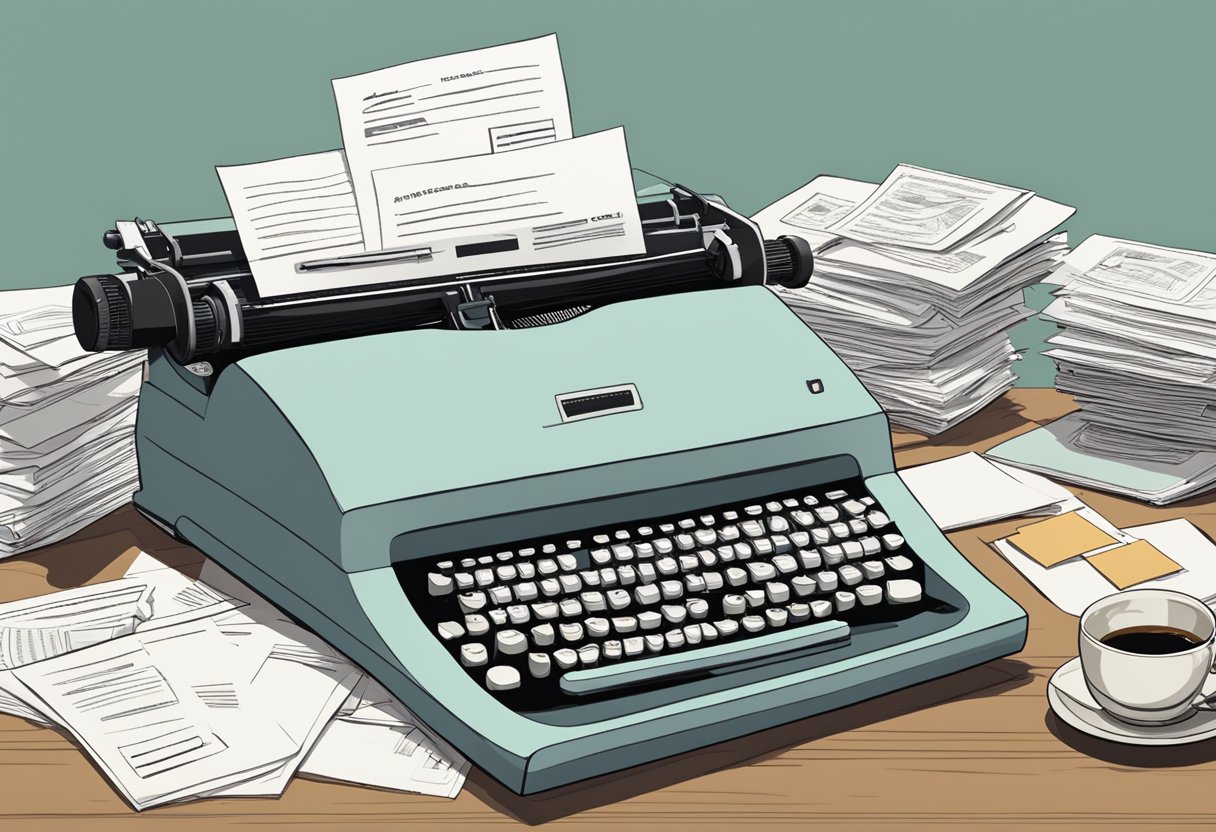Mastering the Art of Cover Letters: Your Guide to Impress Recruiters
Mastering the art of cover letters is a critical step for anyone looking to make a strong first impression on a potential employer. Unlike a resume, which lays out the facts of your professional experiences and skills, a cover letter provides a unique opportunity to tell a narrative about oneself, emphasizing why you're the ideal candidate for the job.
It serves as a personal introduction and a compelling argument for your candidacy, tailored specifically to the job and the company to which you are applying.

Crafting an effective cover letter requires a balance of creativity and professionalism.
It should open with an engaging introduction that resonates with the reader, showcase how your skills and experiences align perfectly with the job requirements, and demonstrate your enthusiasm for the position.
Personalization is key, as it reflects your genuine interest.
The cover letter must also adhere to formatting and style guidelines to maintain a polished and professional appearance. Before submission, thorough proofreading is essential to ensure clarity and to eliminate any errors that could detract from the desired impression.
Key Takeaways
- A cover letter uniquely personalizes the applicant's professional narrative.
- Tailoring the cover letter to the job and the company demonstrates genuine interest.
- Attention to detail in formatting and proofreading reflects professionalism.
Understanding the Purpose of a Cover Letter
A cover letter serves as a personal introduction and a concise argument for why the applicant is the ideal candidate for the role.
The Role in Job Applications
A cover letter is the applicant's opportunity to connect their skills and experiences with the specific needs of the position they are applying for.
Unlike a resume, which is a factual summary of skills and experiences, the cover letter allows the candidate to directly address the employer, making the case for their suitability.
It enables the individual to go beyond the bullet points of a resume and weave a narrative that aligns with the job description and the company's goals.
The Importance of First Impressions
First impressions are crucial in the hiring process and a well-crafted cover letter creates a positive one before a resume is even reviewed.
A cover letter must be engaging and refined since it acts as a personal ambassador for the applicant; its quality can determine whether the accompanying resume is considered.
Through tailored language and a clear structure, the cover letter should quickly capture the reader's attention and establish a professional tone that reflects the candidate's attention to detail and genuine interest in the role.
Essential Components of a Cover Letter
A cover letter distinguishes a job applicant by detailing their relevant skills and expressing interest in the role. Here are the elements it typically includes.
Contact Information
The applicant should start the cover letter with their name, address, phone number, and email. This is often aligned to the left, mirroring a business letter's header.
Salutation
The salutation directly addresses the hiring manager or recruiter. If the name is unknown, "Dear Hiring Manager," is a customary placeholder. However, if the name is known, it should be "Dear Mr./Ms. [Last Name],".
Opening Paragraph
The opening must grab the reader’s attention.
It should outline the role being applied for and how the applicant discovered the opportunity. It may also briefly mention why the applicant is enthusiastic about the position.
Body of the Letter
The body should consist of one or two paragraphs that describe the applicant's relevant experience, accomplishments, and skills.
The body should link the applicant's qualifications to the job requirements, using specific examples.
Closing Paragraph
In the closing paragraph, the applicant should restate their interest in the role and why they would be a worthwhile addition to the team. They should thank the reader for considering their application.
Signature
The letter concludes with a polite sign-off, such as "Sincerely," or "Best regards," followed by the applicant's signature (if submitting a hard copy) and typed name.
Crafting a Captivating Opening
The opening of a cover letter makes the crucial first impression on a potential employer. It should be both engaging and reflective of the candidate's unique qualifications.
Personalizing Your Approach
A candidate must tailor their cover letter introduction to the prospective job and company.
Utilizing the job description and company values found on their website or professional networks such as LinkedIn can provide insight into what the employer is seeking. For instance:
- Research: They should learn about the company's culture and any recent news.
- Tailoring: The introductory paragraph should mention the specific job title and reference how their skills align with the job requirements.
Showcasing Your Enthusiasm
Demonstrating genuine enthusiasm for the role can help a candidate stand out. They might consider:
- Explicit Expressions: Phrases like "I am thrilled at the prospect of contributing to..." can convey excitement.
- Relevant Achievements: Briefly highlighting a key achievement that's relevant to the job can showcase their capability and eagerness to replicate such successes in the new role.
Demonstrating Your Fit for the Position
In crafting a compelling cover letter, the candidate needs to articulate clearly how their skills and experiences align with the job requirements. The focus should be on matching qualifications to the employer’s needs with precise language and relevant examples.
Aligning Skills and Experiences
A candidate must first inventory their skills and experiences, then align them with the needs of the potential employer.
It's strategic to boldly highlight how specific skills and past job responsibilities are relevant to the position being applied for.
Employers appreciate a candidate who can immediately show their professional assets match the job criteria.
- Technical Skills: List relevant software, tools, and processes.
- Soft Skills: Emphasize communication, teamwork, or leadership abilities.
- Relevant Experiences: Connect past job duties with the advertised role.
Addressing the Job Description
Careful attention should be given to the job description provided by the employer.
Tailoring the cover letter to these specifications demonstrates an understanding of the role and shows diligence. Candidates should italicize terms and phrases directly from the job description, showing a clear connection.
- Keywords: Integrate keywords from the job description to pass automated screening tools.
- Relevancy: Only highlight experiences that relate directly to the job’s requirements.
Providing Concrete Examples
Tangible examples give life to the qualifications and skills mentioned. These should be short, impactful, and quantifiable where possible. Using a simplified table format ensures clarity:
| Qualification | Example |
|---|---|
| Leadership | Led a team of 10 in a project that increased sales by 20%. |
| Problem-solving | Streamlined a workflow process to save 15 hours of work per week. |
| Technical proficiency | Developed a customer database using SQL that improved data retrieval efficiency by 30%. |
Concluding Your Cover Letter Effectively
The conclusion of a cover letter is pivotal—it's the final opportunity to create a lasting impression and prompt the hiring manager to move forward with your application.
A Strong Closing Statement
In crafting an impactful closing statement, one should reiterate their keen interest in the position and confidently summarize the value they bring. For example: "With a proven track record in sales and a commitment to continuous learning, I am excited to contribute to the dynamic team at XYZ Corp."
Call to Action
A call to action should be polite yet assertive, encouraging the hiring manager to take the next step. For instance: "I look forward to the opportunity to discuss how my skills align with the goals of your team."
Thanking the Employer
One must always conclude with a note of appreciation, acknowledging the recruiter's time and consideration.
This could be structured as: "Thank you for considering my application. I hope to bring my expertise to XYZ Corp and help drive the success of your company."

Get a higher quality resume format
Our Resume Builder ensures best practices, logic, formatting standards and job matching opportunities from thousands of job boards and portals around the world.
By clicking Start Your Resume, Your are agree to our Terms of use and Privacy Policy
 India's
premier resume service
India's
premier resume service






